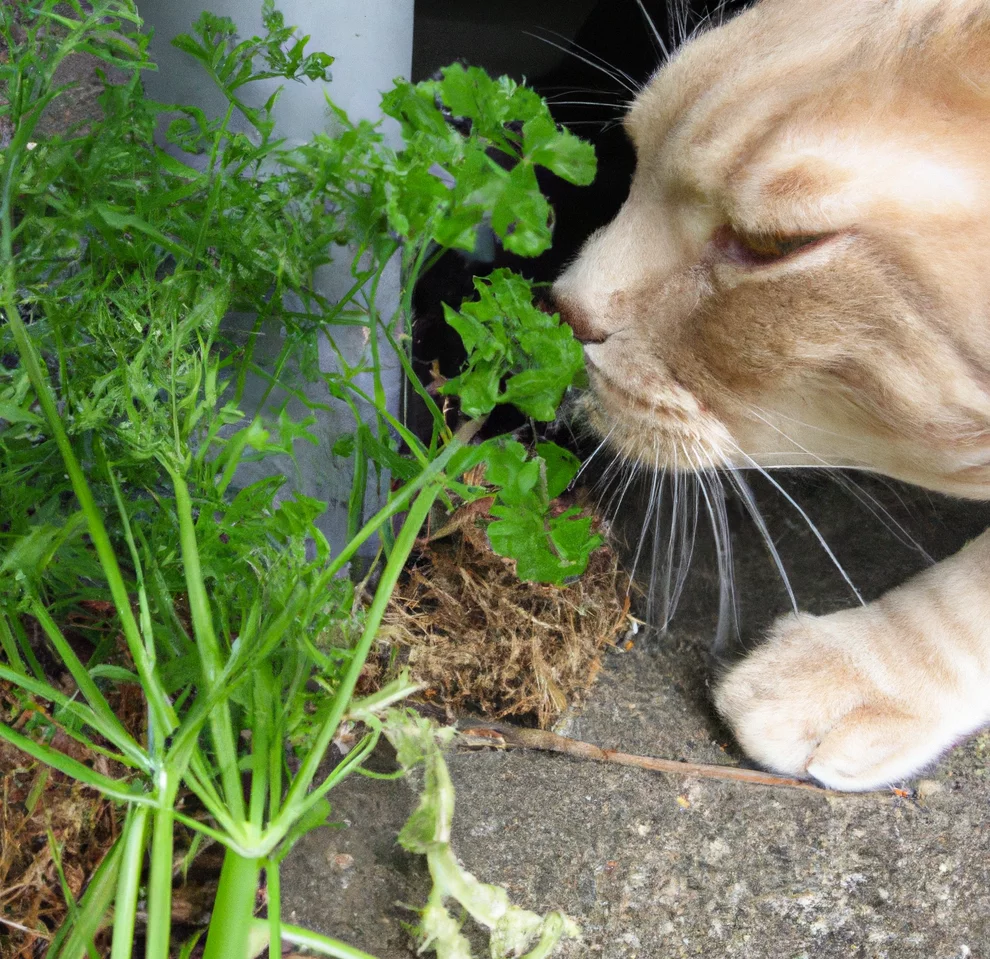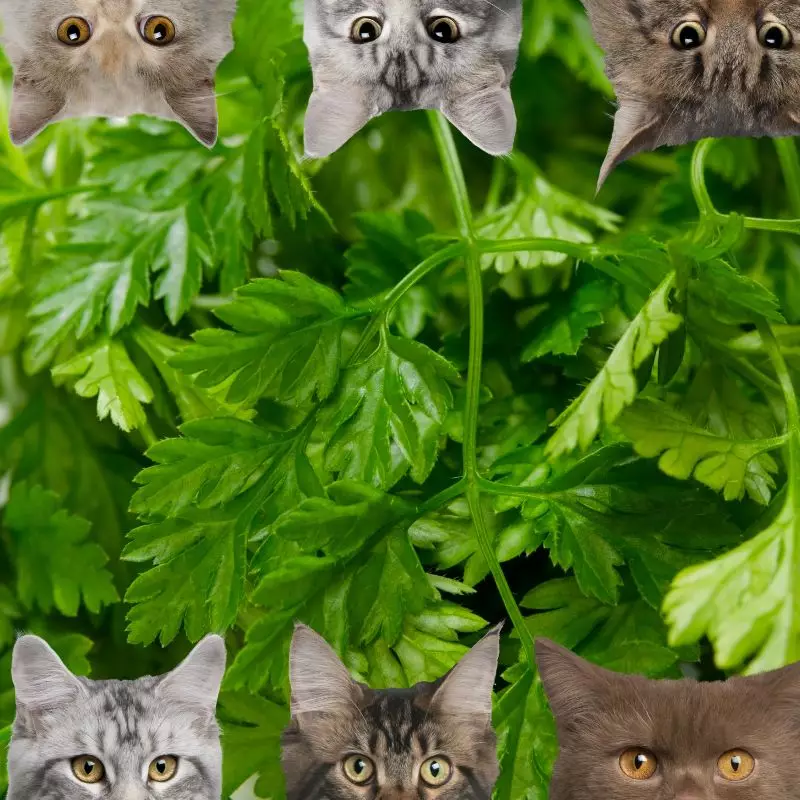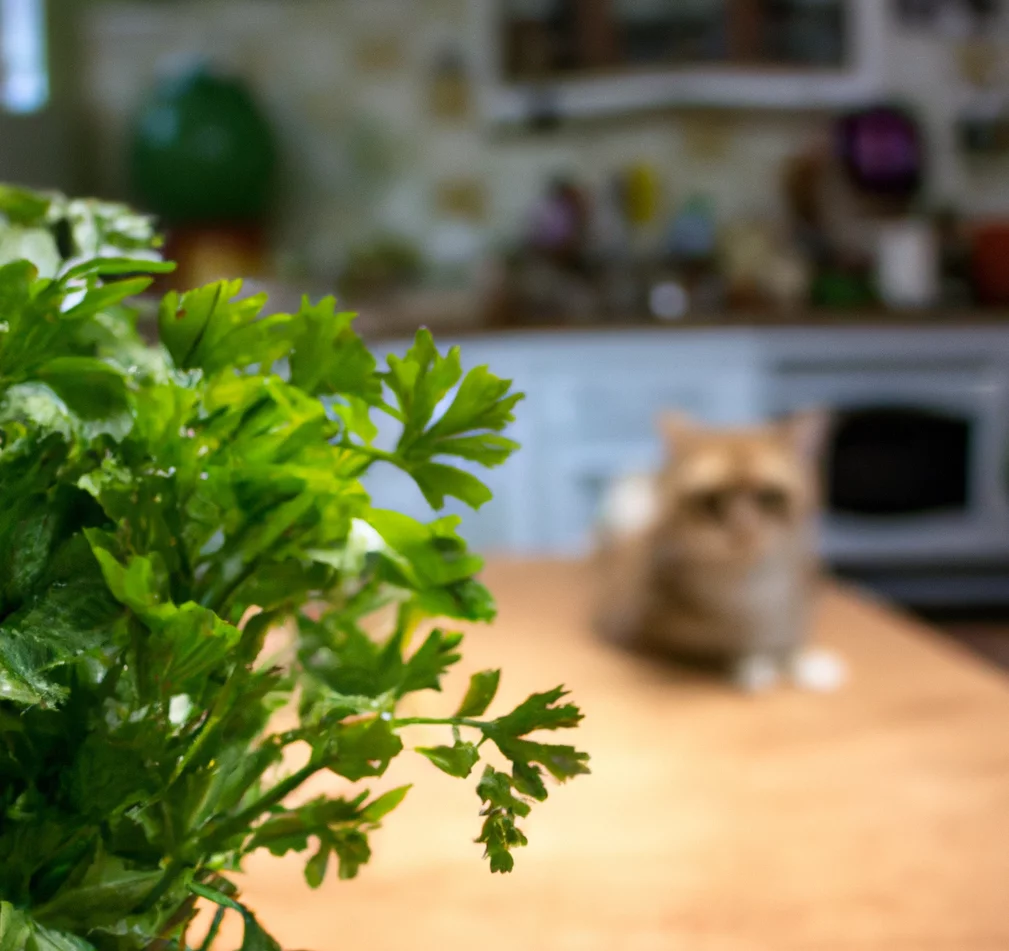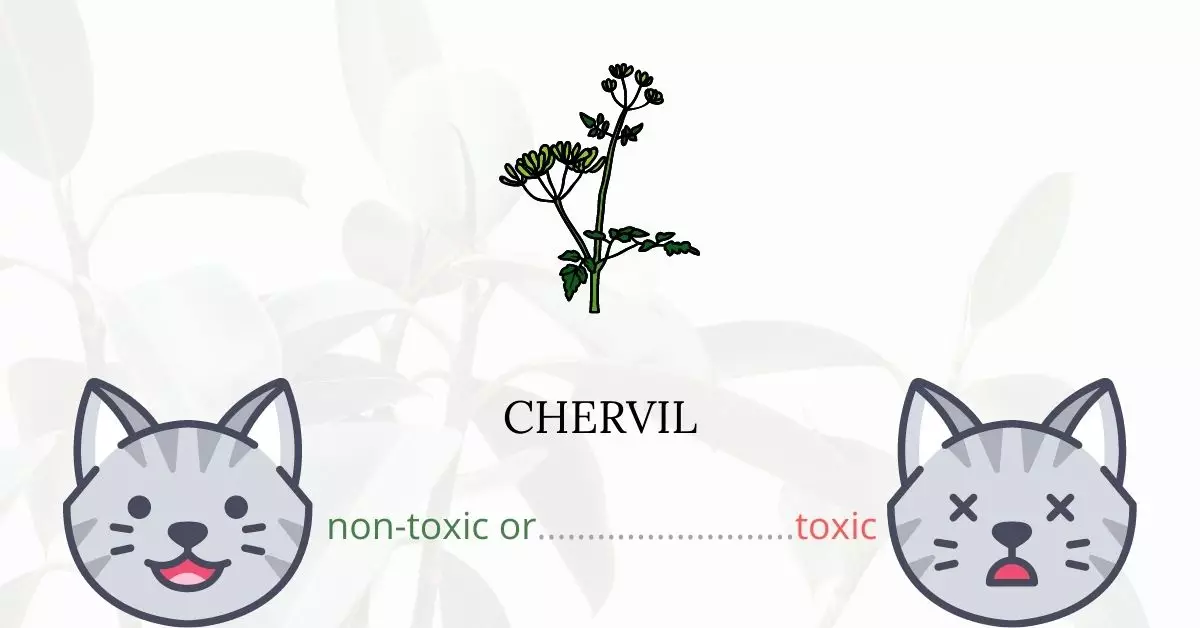Chervil is not toxic for cats. This assertion is supported by authoritative sources such as the American Society for the Prevention of Cruelty to Animals (ASPCA), which has included chervil in their list of non-toxic plants for cats, dogs, and horses.
Additionally, this article has been crafted in collaboration with a team of experienced DVMs (doctors of veterinary medicine). Through their invaluable insights and our research on high-authority websites like ASPCA and PetMD, we aim to provide cat owners with precise and up-to-date information about the potential effects of various plants on feline health. While chervil is recognized as safe for cats, it’s always prudent for cat owners to exercise caution before introducing any new food or herb into their cat’s diet.
Can Cats Eat Chervil?

A small amount of chervil wouldn’t hurt your feline friends. Chervil does not have toxic compounds that can cause poisoning in cats. However, it is still not advisable to be included in a cat’s diet.
Plants don’t go well in a cat’s digestive system because they do not have the enzymes that can digest plant materials. This is how the bodies of carnivorous animals function.
If you are growing plants at home, it is essential to know that commercial fertilizers and pesticides may contain toxic materials that can harm your cats. If these chemicals have left residues in your plants, this can be inhaled or ingested by your curious cats and cause poisoning.
What is Chervil?

French parsley and garden chervil are other common names for chervil. This Apiaceae species is a delicate annual herb that resembles parsley. It was originally known as myrhis because of the volatile oil it contained, which smelled like the resinous chemical myrrh. It’s a component of the French herb blend fines herbes and is commonly used to season mild-flavored dishes.
Chervil is endemic to the Caucasus, but the Romans spread it over most of Europe. It is also commonly grown in the United States. Garden chervil differs from all other Anthriscus species in North America by having lanceolate-linear bracteoles and fruit with a rather big beak.
Chervil plants can grow up to 70 centimeters tall. They have curled tripinnate leaves. The tiny white blooms of this plant appear in umbels 2.5–5 cm in diameter. They also yield oblong-ovoid fruit that is about one centimeter long and has a thin, ridged beak.
Keeping Cats Away From Chervil

If you are growing chervil at home, it is best to put them in a place away from your cats. Place your plant in a space that your cats cannot access.
You could also try natural deterrents available at pet supply stores. You may also mix a vinegar solution and spray it on your plants if you like. To prepare this solution, just dilute the vinegar with water.
Vinegar makes the plants unappealing to felines. Cats loathe the acidic taste and smell of vinegar, therefore they usually avoid it.
Plants to Avoid For Your Cats
If you are a cat owner and unsure if the plants growing in your yard are harmful to your cats, check out this list of toxic plants for cats. You can also check our list of non-toxic plants for cats.





